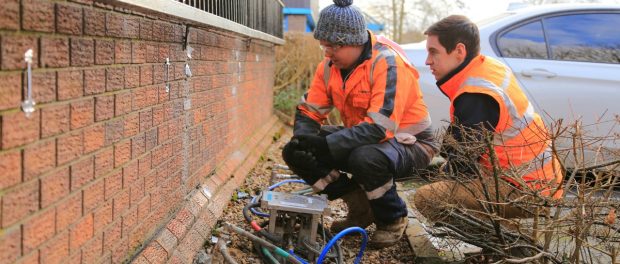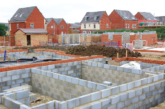
Victor Chirilas, Director Mainmark UK – which provides a range of specialist ground engineering and asset preservation solutions – addresses the importance of efficiency in meeting the housing demand.
In 2015 the Government set out with the ambition to deliver one million ‘net additions’ to the housing stock by 2020, which included conversions and changes of use, giving property developers two clear options: building more housing or renovating/converting existing buildings.
New Builds
With the obvious need for new homes, it is critical that housing developers consider the need to have stable ground to build on, and that the foundation soil is protected against environmental factors such as flooding, ice and snow. With extreme weather in the UK becoming more common, the building must be able to withstand the elements to prevent foundation damage and subsidence, among other issues. Building as quickly as possible, and often as cheaply as possible, can increase the risk of structural issues and could cause longer-term problems.
It’s common for new buildings to settle in their first few years and this shouldn’t be a cause for alarm if there is some, limited movement, but if this movement is severe or ongoing, it may be caused by subsidence. Re-homing homeowners or tenants and opting for traditional concrete underpinning work can be an unpopular and slow solution. More modern methods, such as the ‘key-hole surgery’ resin injection approach, offer a cost-effective and less invasive alternative to traditional underpinning methods. For builders, housing developers and property owners who are renovating their dwellings, this solution could save weeks, often with no need to relocate owners/tenants.
Conversions and renovations
If done correctly, renovation can be a much quicker way to providing new homes. Starting with the foundations and ensuring they are sound is the first step to preserving a building’s longevity and will allow for the refurbishment to take place. If this is not addressed first then upgrading expensive interior fixtures like doors and windows can become an issue in the future if the property was to subside. This is time consuming and expensive to fix and they may need to be re-replaced.
When assessing the foundations in an existing structure, understanding the soil type is critical. In the UK the most common soil types are clay, sand and silt, fill and organic:
Clays
Reactive clay soil swells when wet and shrinks when dry causing subsidence in drier conditions, or heave in wetter, areas. Over-saturated clay also loses its bearing capacity causing building footings to settle in the weakened soil, which can sink even further as it dries out.
Sand and Silt
Structures on sand and silt soils often experience settlement caused by flowing ground water, a natural underground watercourse or a leaking sewer or storm water pipe. The finer grains are washed away leaving larger grains to settle, and the building’s footings and foundations become unsupported, compromising the structure above.
Fill
Fill is earthen material placed and compacted in a hole or depression. It can consist of soil, and can also include aggregate, rock or crushed construction waste. Structures built on fill are susceptible to the same issues as those on sand and silt, especially when water washes away finer material. Settlement is worse if the fill is poorly compacted.
Organic
Organic soils, especially peat, are weak and highly compressible making them prone to settlement, as the weight of any structure above causes compaction. Primary settlement decreases over time, but can total 100s of millimetres, resulting in significant structural issues.
If there is an issue with the foundations of a building, then the modern method of resin injection can provide a less invasive alternative to traditional underpinning methods. This method allows both ground strengthening and re-levelling the structure, increasing the likelihood of it staying as intended and serves its purpose for the future.
The race to provide new homes and meet targets continues. With careful consideration given to the underlying ground of any building new or old, builders and developers can work confident in the knowledge that their project has a head start.








